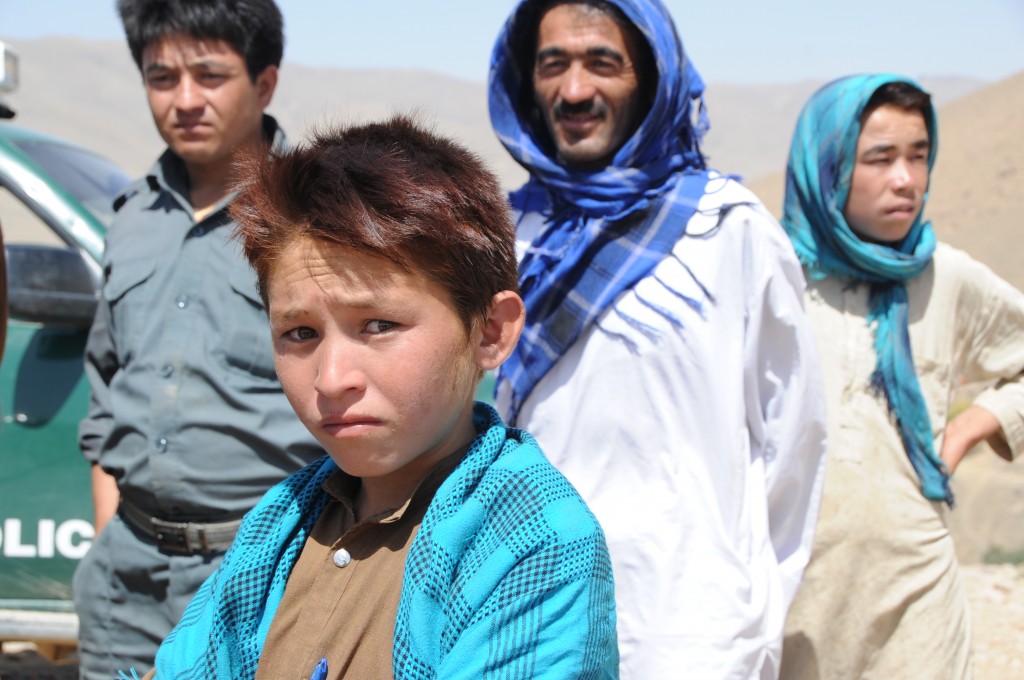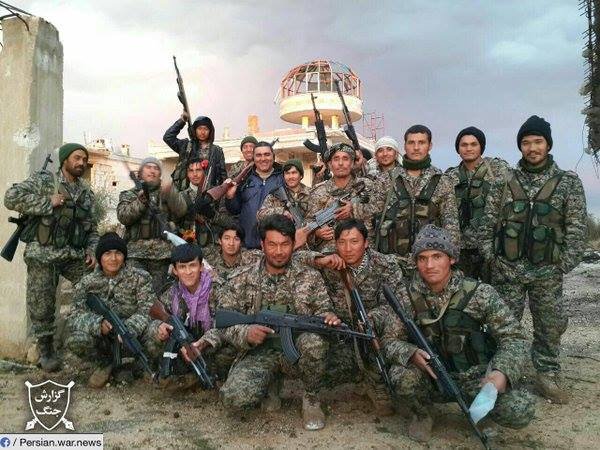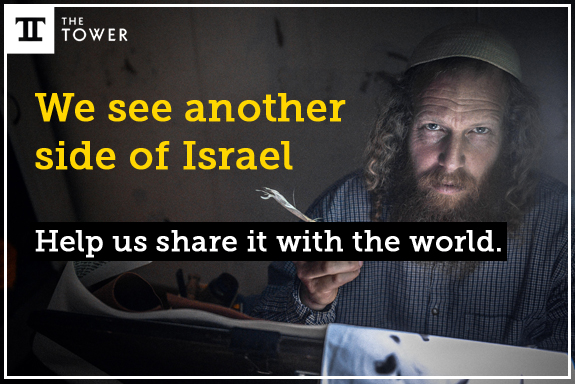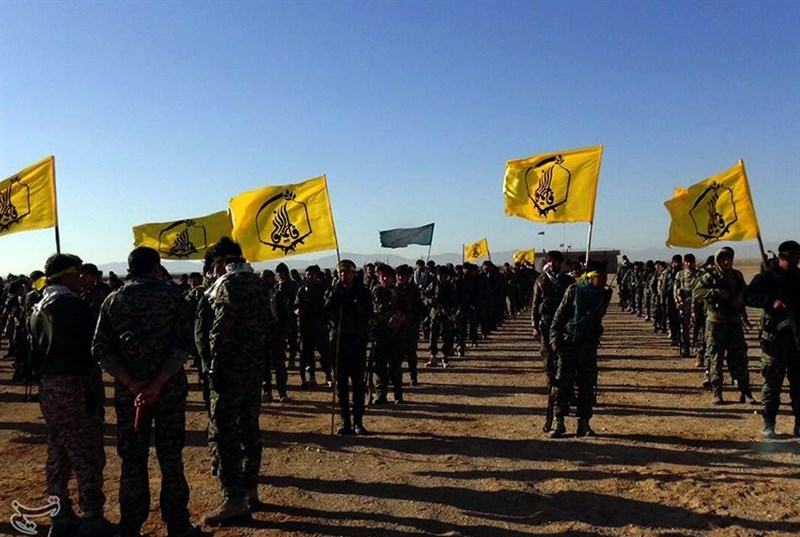The Hazara Muslim community is trapped: forced to flee to Iran from their homes in South Asia, recruited or tricked to fight (and die) in Syria, and then targeted by Sunni extremists for their role in the civil war.
On December 13, the Russian propaganda website Sputnik tweeted a photo captioned “Syrian Army prepares to retake Palmyra.” The image showed four men on a truck assembling munitions. One wore an Afghan flag as a headscarf, and another was identified as a member of the Hazara Shia minority in Afghanistan.
A month later, as ISIS assaulted Syrian regime positions at Khanaser southeast of Aleppo, an Afghan member of the Fatemiyoun brigade shot a video showing Afghans waiting for airstrikes to help push ISIS back.
The often-forced participation of Afghans is one of the great untold stories of the Syrian Civil War. It is estimated that Iran’s Islamic Revolutionary Guard Corps (IRGC) has sent between 18,000-30,000 Shia Afghans to fight in Syria on the side of the Assad regime since 2015. This is part of the IRCG’s effort to shore up their frontlines after six years of bloody combat against numerous Sunni rebel groups. It is also part of a wider alliance of Shia militias, such as Lebanon’s Hezbollah, that have poured thousands of fighters into Syria. However, unlike Hezbollah or Iraqi supporters of the Syrian regime, the role of the Afghan recruits is complicated and tragic. There is compelling evidence that they are victims of human trafficking, recruited and exploited by Iran, and then sent to Syria to die in a foreign war.
The Hazara Shia are a Persian-speaking religious and ethnic minority located mostly in Afghanistan and Pakistan. Often persecuted, they usually end up in Iran after fleeing violence elsewhere. For example, they are victims of constant terror by Sunni jihadist groups in Pakistan. In February 2013, more than 100 were killed in a bombing in Quetta, which has been a frequent target. In June 2015, half a dozen were murdered and three businesses owned by Shia attacked. Similar attacks occurred in April and November 2015. In October 2016, gunmen shot up a bus and killed several Hazara women in Quetta. Lashkar-e-Jhangvi, a Sunni jihadist group, claimed the attack was in response to the Afghan Shia’s role in the battle of Aleppo. On January 6, five Shia were murdered in a drive-by shooting. Al-Jazeera called the constant attacks on Shia in Pakistan a “sustained, targeted campaign of killings,” carried out by jihadists “once allied to the Pakistani state.” Caught up in this cauldron, Hazaras flee to Iran, where Iranian intelligence scoops them up and gives young men an offer they can’t refuse: Go die in Syria for the Ayatollah.
Afghanistan also has a population of several million Hazaras, who have been the subject of brutal persecution since the 19th century. Under the Taliban in the 1990s, they were subjected to discrimination and violence. Taliban commander Maulawi Mohammed Hanif told followers, “Hazaras are not Muslims; you can kill them.” As the Taliban creeps back toward Kabul, it has been targeting them again. In July 2016, more than 60 Hazaras were murdered in a bomb attack on a Hazara rights protest, and in November, their Baqir ul Olum mosque in Kabul was blown up. Vali Nasr of Johns Hopkins University believes that the ISIS attack might be “payback for Hazara fighting in Syria.” Clearly, a particularly vicious cycle exists: Iran uses Hazara Shia, rather than Iranians, to fight in Syria; this puts the Hazaras in danger of retaliation; this in turn forces Hazaras to flee to Iran, where they are recruited or forced to fight in Syria, beginning the cycle over again.
The Hazaras have suffered numerous casualties in Syria, where they are often referred to as “cannon fodder” or “meat shields” for the regime. In November 2016, a Syrian rebel Twitter account showed an image of a man they had captured who they claimed was an “Afghan.” Afghan army IDs and bank cards were found on other prisoners, sometimes with English on them. Their owners had died in Aleppo during 2016, and in some cases it is alleged they were child soldiers. Afghan parents have been interviewed who said they were surprised to find their sons had gone to Syria. One woman told BBC Pashto that her son left Kabul for Iran to find work and was sent to Syria and killed. By July 2015, more than 700 had been killed, according to an Iranian news website.
In 2013, two years after protests broke out against Assad and the civil war began, observers first mentioned the Hazara community in Syria in the context of migrants. They were living near the Sayyida Zainab shrine in Damascus as refugees. At the time there were several thousand. Their participation in the fighting was first noticed online in January 2014. By the following year, the IRGC-run Fatemiyoun brigade, made up of Hazaras, had been formed, and photos of its fighters were being circulated online.
How are they recruited? In the beginning, Iran enticed young men through cash. Afghans guarding the Sayyida Zainab shrine were described by The New York Times as facing “little choice if they wanted to support their families [back home].” In a tweet on January 27, Qalaat Al Mudiq, an academic and military analyst, wrote that Afghans are paid $600 per month and sent to Syria on regularly organized flights. Journalist Mirwais Afghan claimed in June 2016 that the amount was $450 per month. One woman told The Wall Street Journal that her brother was lured to a recruitment office in Mashhad. He received 20 days of training and religious indoctrination before being flown to Damascus. He was killed in November 2014. Another woman told the Pakistani newspaper Dawn that her 35-year-old husband was promised $750 a month and an Iranian residency permit. A report in The Guardian found the Iranian embassy in Kabul was paying middlemen to recruit fighters. The Christian Science Monitor interviewed an Afghan man in June 2016 who said recruiters from the IRGC’s Basij militia used to visit him daily to encourage him to go, saying, “We will send you to Syria and when you come back we will give you an Iranian passport, a house, and money.”
Most Afghans said they were sent on “suicide missions” and that “Afghan lives have no value” to their IRGC commanders. Recruits said that in Iran many Afghans were coerced and threatened with being kidnapped or killed if they didn’t sign up. When Afghans die, their families are told their sons are “martyrs” and promised money, which never arrives.
A BBC investigation in April revealed that many Afghan recruits flee their units and try to get to the EU. One man said he was born in Isfahan, Iran, to Afghan refugees and lived as a second-class citizen. Then the IRCG came and promised him a passport if he went to Syria. Once he joined, he received two weeks of training. The Iranian commanders took his cellphone. He said he was sent to take a sector. If the sector were taken, he was told, he and his fellow soldiers were to hand it over to their Syrian army allies.
Another Afghan in Greece—one of 200,000 who came to Europe in 2015—told the BBC that he was arrested in Iran. At the Asgar Abad detention camp, he was offered the chance to be deported to Afghanistan or go to Syria. After a year of service in Syria, he didn’t receive a promised Iranian residency permit, but was threatened with deportation if he didn’t go back to Syria. He deserted like many thousands of others and fled to the EU.
Iran has employed other methods as well, such as recruitment videos and religious propaganda. France24 has reported that Shia clerics were dispatched by Iran to aid in the recruitment. Sometimes outright violence is used. “One 17-year-old said he had been forced to fight without being given the opportunity to refuse,” the NGO Human Rights Watch reported.
There is unquestionably a large recruiting pool for Iran to exploit. There were more than two million Afghan refugees in Iran in 2016, according to the United Nations High Commissioner for Refugees. One of those refugees was a man named Murad who was captured by Syrian rebels. He told Der Spiegel’s Christoph Reuter that he was arrested in Iran and falsely accused of selling drugs. “For fifteen days he was beaten and whipped,” Reuter wrote. Then one day at Evin Prison in Tehran, Murad received a visitor wearing the IRGC’s green uniform. “Do you want the final five years of your sentence commuted?” the man asked. Soon Murad was off to Syria to fight.
In May 2016, Iranian Supreme Leader Ayatollah Ali Khamenei praised the families of the Afghans who had fallen in Syria. “Martyrs who die on this path are privileged,” he told his audience. “In fact your children have created a shield with their life to protect the holy shrines from these evil [forces]. Therefore their status is very important.” Iran denies the Afghans are mercenaries or coerced. The IRGC claims that they go to Syria for religious and patriotic reasons.
But the evidence proves that the IRGC has been targeting tens of thousands of vulnerable people to fight Assad’s war in Syria. Recruiters are paid a commission by the Iranian government to target Afghans rather than Iranians. The government has established a deep network throughout Hazara communities in Iran and Afghanistan, targeting the poor and those seeking work. It has lured them from Pakistan. In Iran it uses coercion by threatening those who refuse with deportation. It also offers passports and residency permits that it does not provide, hoping that the fighters will die as “martyrs” before they ask for compensation. It also recruits prisoners, paying them less than other recruits and promising them time off their sentences. It flies the recruits back and forth to Syria on civilian planes used by the IRGC. The Afghans have no travel documents, which means they are controlled entirely by the IRGC while in Syria and cannot flee. Underage teens are also recruited.
Clearly, Iran’s recruitment of refugees and asylum seekers violates UN guidelines that call on nations to “prevent the military recruitment of refugees in camps and settlements” and to “ensure that measures are taken to prevent the recruitment of refugees by government armed forces or organized armed groups.” This amounts to human trafficking.
The IRGC controls large parts of the Iranian economy and is intertwined with the leading political and military institutions of the state. Its direct and documented involvement in the violation of the rights of refugees provides more evidence of why it should be designated a terrorist organization. The Trump administration was discussing designating the IRGC in early February; the abuse of Afghan refugees adds evidence in support of the need for the U.S. and the international community to recognize Iran’s misdeeds. By providing payment and transport to Afghans who are sent to Syria under the command structure of the IRGC, Iran is also violating the Geneva Convention as spelled out in the Protocol Additional of June 1977 regarding the use of mercenaries as combatants in war.
New sanctions should be put on Iran, including sanctions specifically targeting the IRGC. The international community should target areas of the Iranian economy linked to the use and abuse of Afghan refugees, such as Iran’s use of commercial and other flights to move them back and forth. The U.S. should also call for an investigation into abuses committed by the IRGC in Syria, and members of the International Criminal Court should call for an investigation into the role and exploitation of Hazara Afghans as part of a wider probe into human rights violations in the Syrian conflict. Only by holding Iran accountable for its actions, rather than welcoming Iranian diplomats as was done by former Secretary of State John Kerry, can Iran be put on notice that its continued behavior does not put it above the law. The IRGC has continually flaunted national and international laws. The case of the Afghan refugees sent to die in Syria sheds a light on how Iran can finally be held to account.
![]()
Banner Photo: Syria Media Organization









